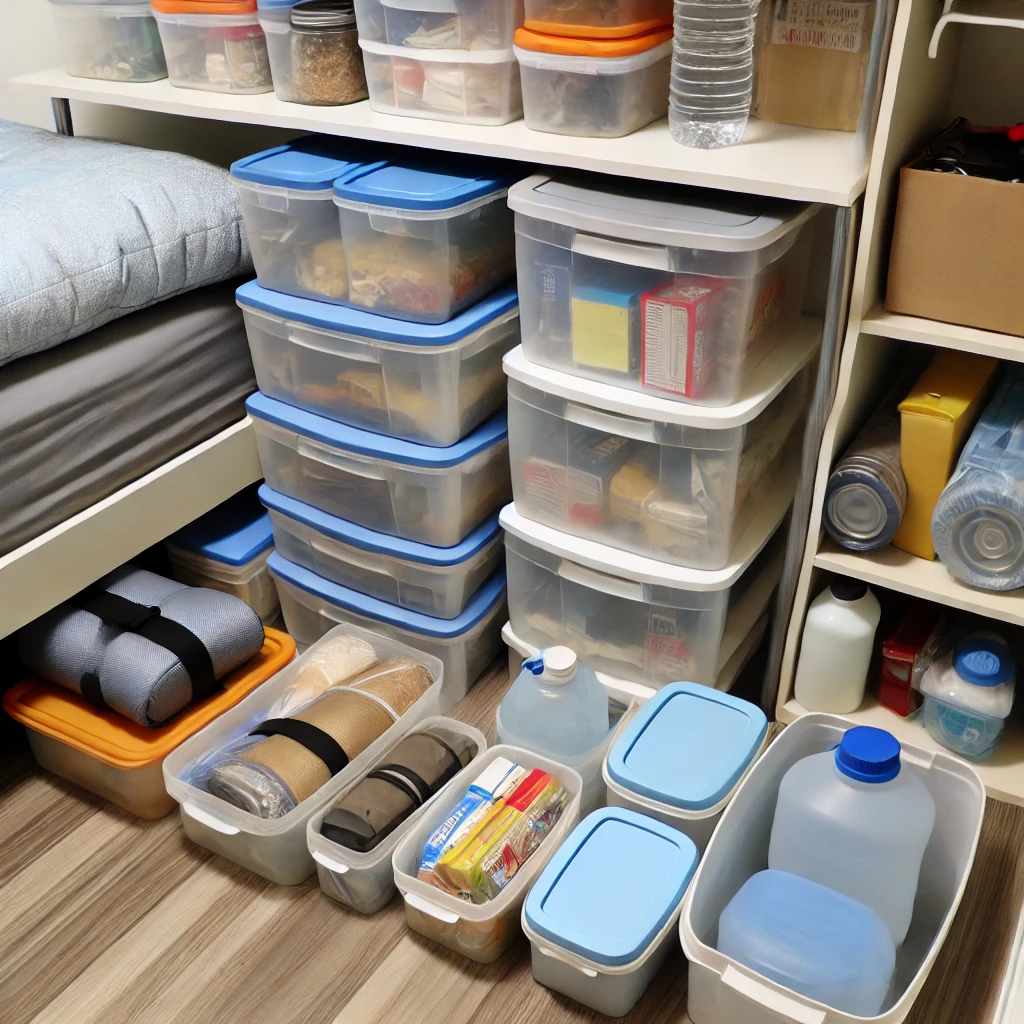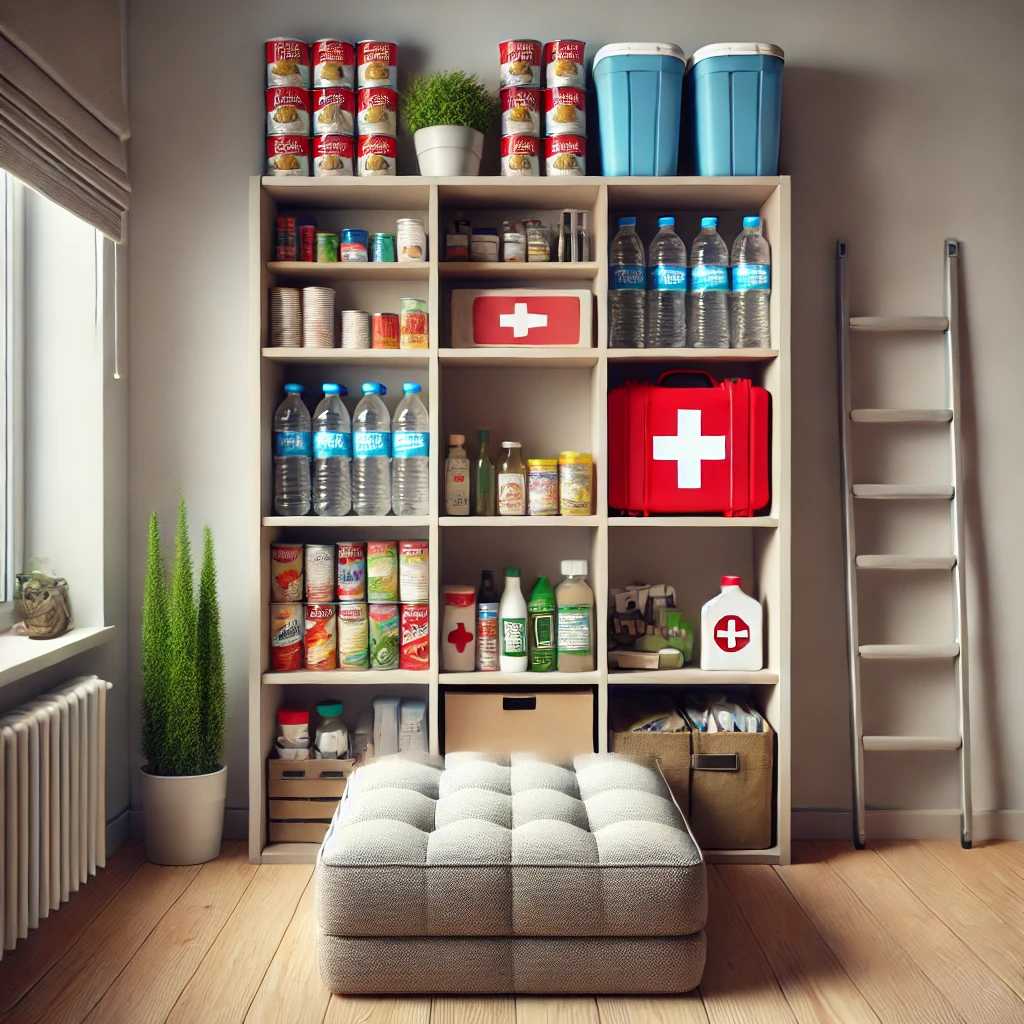In an urban setting, limited space often means limited storage, so small-space stockpiling should not just be on a “wishlist.” With the right techniques, you can effectively stockpile essential supplies in even the smallest apartment. Efficient stockpiling ensures you have the necessary resources to endure a crisis, whether it’s a natural disaster, grid failure, or supply chain disruption.
This post will guide you through practical strategies for creating a sustainable stockpile that won’t overwhelm your living space.
Understanding the Importance of Small-Space Stockpiling
Stockpiling in an urban environment can be challenging due to restricted storage space and security concerns. Still, having a reserve of essential items is crucial for surviving a citywide crisis.
- Supply Chain Vulnerabilities: In densely populated areas, grocery stores and supply centers can empty within hours during a crisis. Stockpiling reduces your reliance on these vulnerable supply chains.
- Personal Safety: Urban dwellers may not have access to backup resources like gardens or nearby natural water sources. Stockpiling essential supplies keeps you prepared and secure within your home.

Key Tips for Small-Space Stockpiling
Here are some practical ways to maximize storage space in your home without cluttering your living area.
1. Prioritize Compact, High-Nutrition Foods
Space-efficient stockpiling starts with choosing foods that pack a lot of nutrition into small packages.
- Canned Foods: These items have long shelf lives, are stackable, and can provide essential nutrients.
- Dehydrated and Freeze-Dried Foods: Foods like dried beans, lentils, and freeze-dried fruits are nutrient-dense and take up minimal space.
- High-Calorie Snacks: Items like protein bars, nuts, and dried fruits provide a quick source of energy without taking up much room.
2. Use Multi-Function Storage Containers
Opt for stackable, sealable containers to keep your supplies organized and easily accessible. Consider:
- Vacuum-Sealed Bags: These bags can reduce the volume of items like clothing and bedding, freeing up room for other essentials.
- Clear Storage Bins: Use transparent containers so you can easily identify what’s inside without opening each bin.
3. Create Hidden Storage Spaces
Finding unused space within your apartment is key to maximizing storage without clutter.
- Under-Bed Storage: Use the area under your bed for long-term items like food or water reserves.
- Closet and Shelf Optimization: Organize closets and shelves vertically, using stackable containers to store items in tiers.
- Furniture with Built-In Storage: Ottomans, benches, and tables with hidden compartments are ideal for discreet storage.
4. Keep a Small-Scale Water Reserve
Water is essential, but it can be difficult to store in a small apartment. Here’s how to do it efficiently:
- Collapsible Water Containers: These containers are compact when empty and can be filled during an emergency.
- Compact Water Filtration Systems: A portable filter or water purification tablets can help turn limited water sources into drinkable supplies.
5. Optimize Vertical Space with Wall-Mounted Shelving
Using vertical space for storage is especially helpful in apartments with high ceilings.
- Install Wall Shelves: Place shelves on walls to store lighter items like non-perishable foods, medical supplies, or tools.
- Use Hooks for Hanging Supplies: Utilize wall hooks to hang smaller bags or items that would otherwise take up drawer space.

6. Rotate Perishable Supplies Regularly
Efficient stockpiling isn’t just about storage; it’s about keeping your supplies usable.
- First-In, First-Out (FIFO) System: Use the oldest items first and replace them with newer ones. This system prevents spoilage.
- Set Reminders for Rotation: Schedule regular reminders to check expiration dates and rotate items as needed.
Essential Items for Small-Space Stockpileing
Here’s a list of must-have items that are ideal for small-space stockpiling:
- Food: Canned goods, dried grains, protein bars, and nuts.
- Water and Filtration: Collapsible water containers and portable filtration systems.
- First Aid Supplies: Bandages, pain relievers, antiseptics, and basic medical tools.
- Hygiene Essentials: Soap, toothpaste, and disinfectant wipes.
- Light Sources: Flashlights, candles, and a small solar-powered charger.
Tips for Maintaining Security with a Stockpile
Stockpiling in a densely populated area may make you a target in a crisis. Here’s how to keep your supplies safe:
- Avoid Advertising Your Preparations: Keep your stockpiling discreet to avoid unwanted attention.
- Decentralize Storage Locations: If possible, split your stockpile into different areas of your apartment. If someone discovers one location, you won’t lose everything.
- Use Furniture as Concealment: Hide supplies within or behind large furniture items to keep them out of sight.

Conclusion
Small-space stockpiling is about creativity, prioritization, and organization. By focusing on compact, high-nutrition items, optimizing hidden spaces, and maintaining regular rotation, you can develop a sustainable stockpile that fits within a small apartment. With these strategies, you’ll be prepared to endure any urban crisis with confidence.
